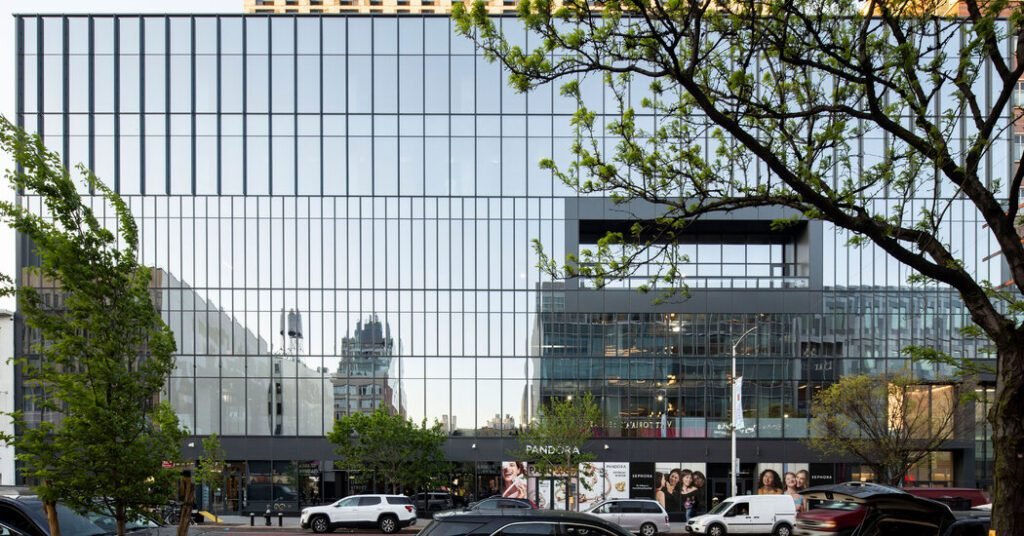The National Urban League moved its headquarters to Harlem, the district where it was founded in 1910, and is New York City’s first museum dedicated to the American Civil Rights Movement, and one of the few museums in the nation to focus on the Northern struggle. We are planning to open one of these. .
The organization was founded in 1910 in the Upper Manhattan area, but its headquarters are now in Lower Manhattan. The National Urban League will return to its roots, highlighting the impact of the Harlem Renaissance on the civil rights movement with its museum and other exhibits.
For company president Marc H. Morial, the move is more than just a financial decision. It’s an opportunity for civil rights organizations dedicated to the economic empowerment of urban communities to put their arguments into practice.
“When we started thinking about where we wanted to locate, whether to buy or build, Harlem was always our first choice because that’s where we were born,” Morial said. “But for mission-driven organizations, office space is more than just a place to work. It’s about being part of a community. It’s about having an impact. It’s about partnering and the people you have a symbiotic relationship with. It’s about working together.”
The new headquarters will be based in a 17-story mixed-use development called the Urban Empowerment Center on the 125th Street block adjacent to Malcolm X Boulevard and Adam Clayton Powell Jr. Boulevard. The organization will use his 81,000 square feet of space in the center for offices and his new fourth-floor urban civil rights museum. The museum features a cafe, a 300-seat auditorium, and 12,000 feet of exhibition space. In addition to the Harlem Renaissance, the museum also explores the Transatlantic Slave Trade and the Great Migration.
“The National Urban League was founded in the North to help African American immigrants from the South find work, housing, dignity, and civil and economic power. It’s unique among civil rights organizations,” Morial said. He said.
The remaining 414,000 square feet of the development is office, retail, and 171 affordable housing units. Harlem’s Studio Museum, United Negro College Foundation, and One Hundred Black Men have offices in the building, and Virginia Union University has administrative offices for recruiting, alumni engagement, and academic support services. A center will be established. The retail space is already 95% leased, with tenants including Target, Sephora and Trader Joe’s.
The project is led by Taconic Partners, Prusik Group, L+M Development Partners and BRP Companies, all experienced developers known for tailoring projects to local communities.
These interviews have been edited for clarity.
Mark H. Morial, National Urban League President
We took on a project that many would say was impossible and did it in the field, where multiple concepts have stood and failed over the past 30-40 years. We invest in our community. This is a $250 million project that will create jobs and make an impact.
There are multiple layers here. We wanted to make a strong statement and demonstrate it with action. And I wanted to demonstrate that you can build first-class buildings in communities like Harlem. Attract top retailers. Use a mix of minority developers, contractors, etc. Partner with top retailers and investors. Bringing cities and states together as partners. Combine retail and affordable housing. And we do that with cultural elements as well.
Michael J. Garner, “One Hundred Black Men” Director
Our mission is education, mentorship, economic development, health and wellness. Those are our four pillars. The “100 Black Men” are 175 of the region’s most powerful Black men, including former mayors, current U.S. representatives, City Council members, business leaders, government officials, and educators. We believe we are the solution to the problems affecting the Black community here in New York City.
Our location in a state-of-the-art building in the historic 125th Street Corridor allows us to establish an innovative corporate chapter for 100 Black men. But this also allows us to collaborate and partner with the National Urban League to increase synergy.
Chris Losco, Senior Vice President, Taconic Partners
The efforts of the National Urban League were instrumental in making this project a reality. It’s not possible without them. We are very excited to have them as our anchor and great co-tenants to build on.
125th Street is one of the country’s historic cultural and retail corridors. Participate in not only these retail and commercial uses, but also cultural uses such as the Civil Rights Museum and the Studio Museum, and hopefully adding to and enhancing them through the work they do to support human rights education and celebration activities. I am thinking of doing so. The past, present, and future of the black experience in America is really cool.
Meredith Marshall, Co-Founder and Managing Partner of BRP Companies
Fortunately, by HUD’s own definition, this building is 100% low-income. We partner with a group called New York Foundlings, which focuses on helping seniors find housing after leaving nursing homes. 51 units are leased for them here. This is an underserved group of people. They need services and support.
Lisa Gomez, CEO, L+M Development Partners
We like complex public-private partnerships. Personally, I feel this is the most interesting place to work. This project was like a Jenga puzzle. It is a complex building because different uses have to be combined, such as leaving the staircase and open floor plate for the museum, or creating units for residential use.
Our goal was to revitalize 125th Street, especially since much of the ground floor retail has been lost due to the pandemic. We hope that this project can replace some of the vibrancy that was lost or subdued during the pandemic.




